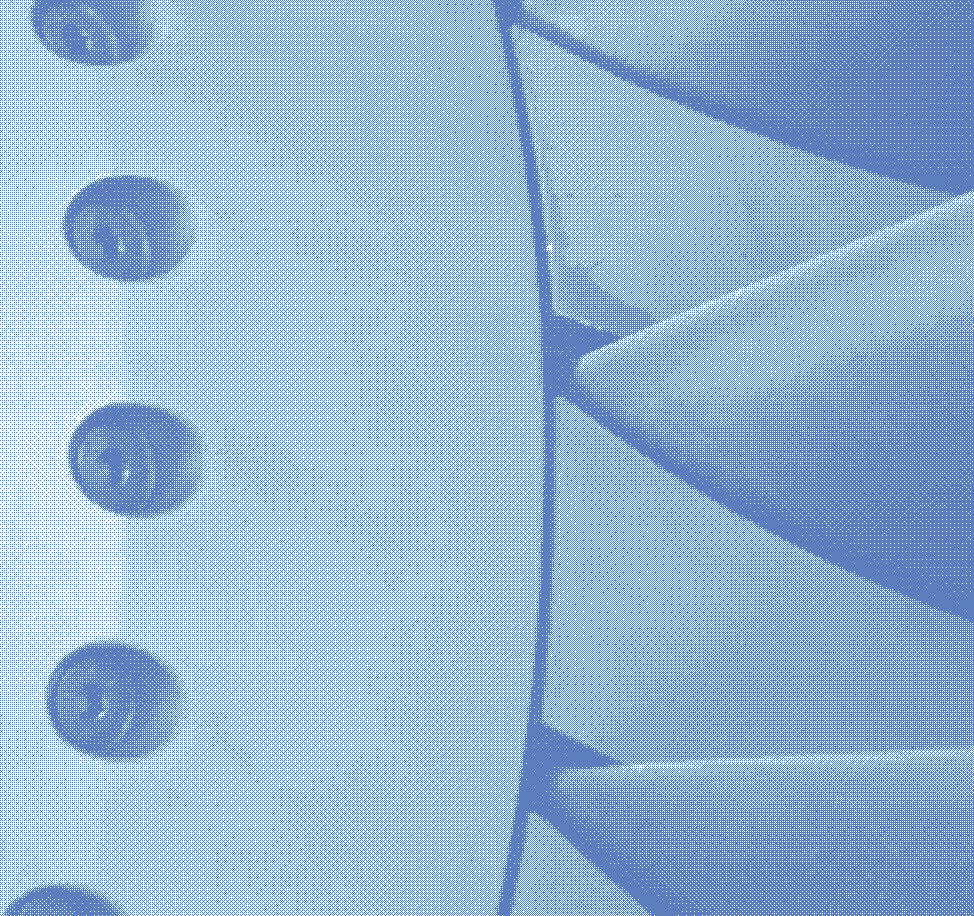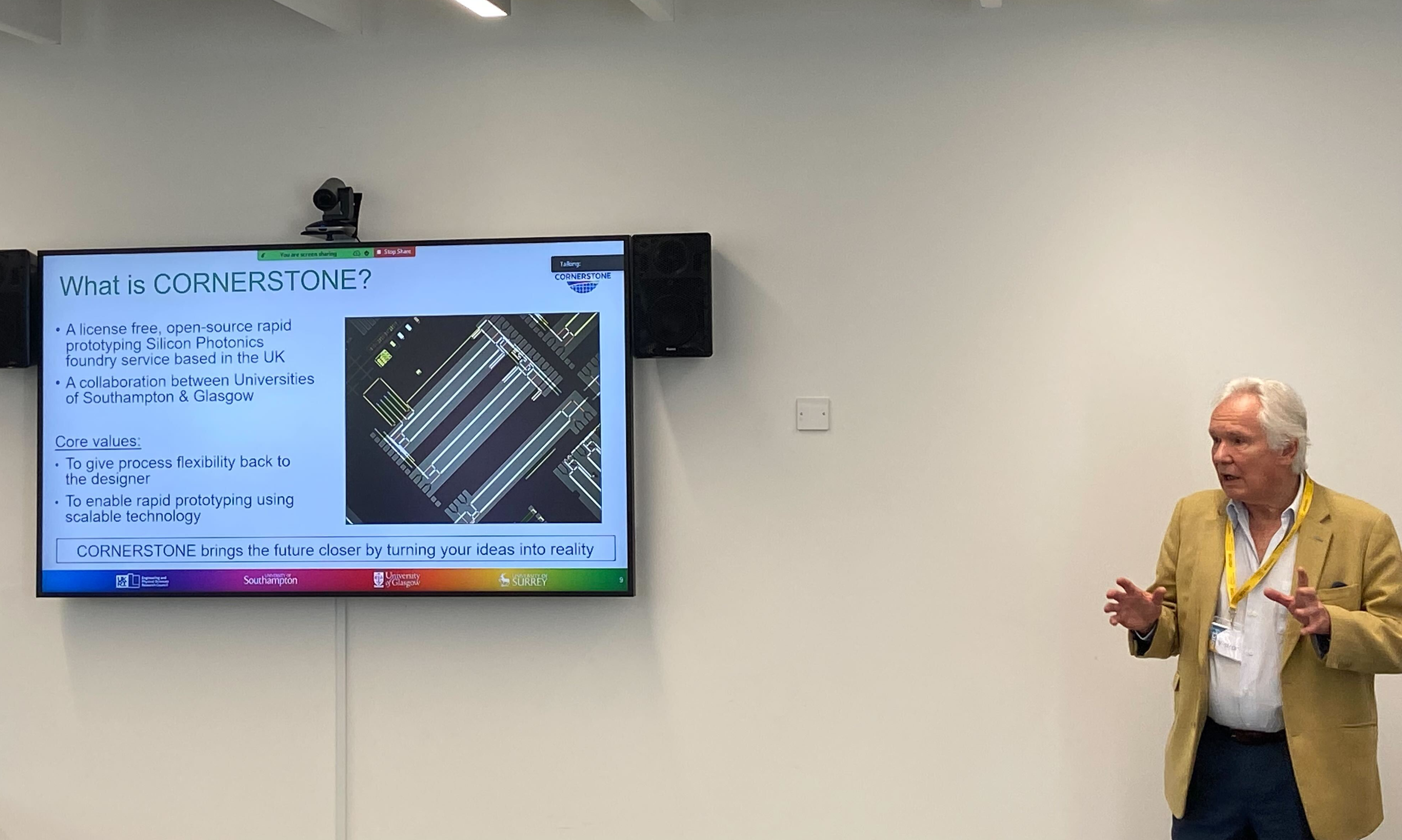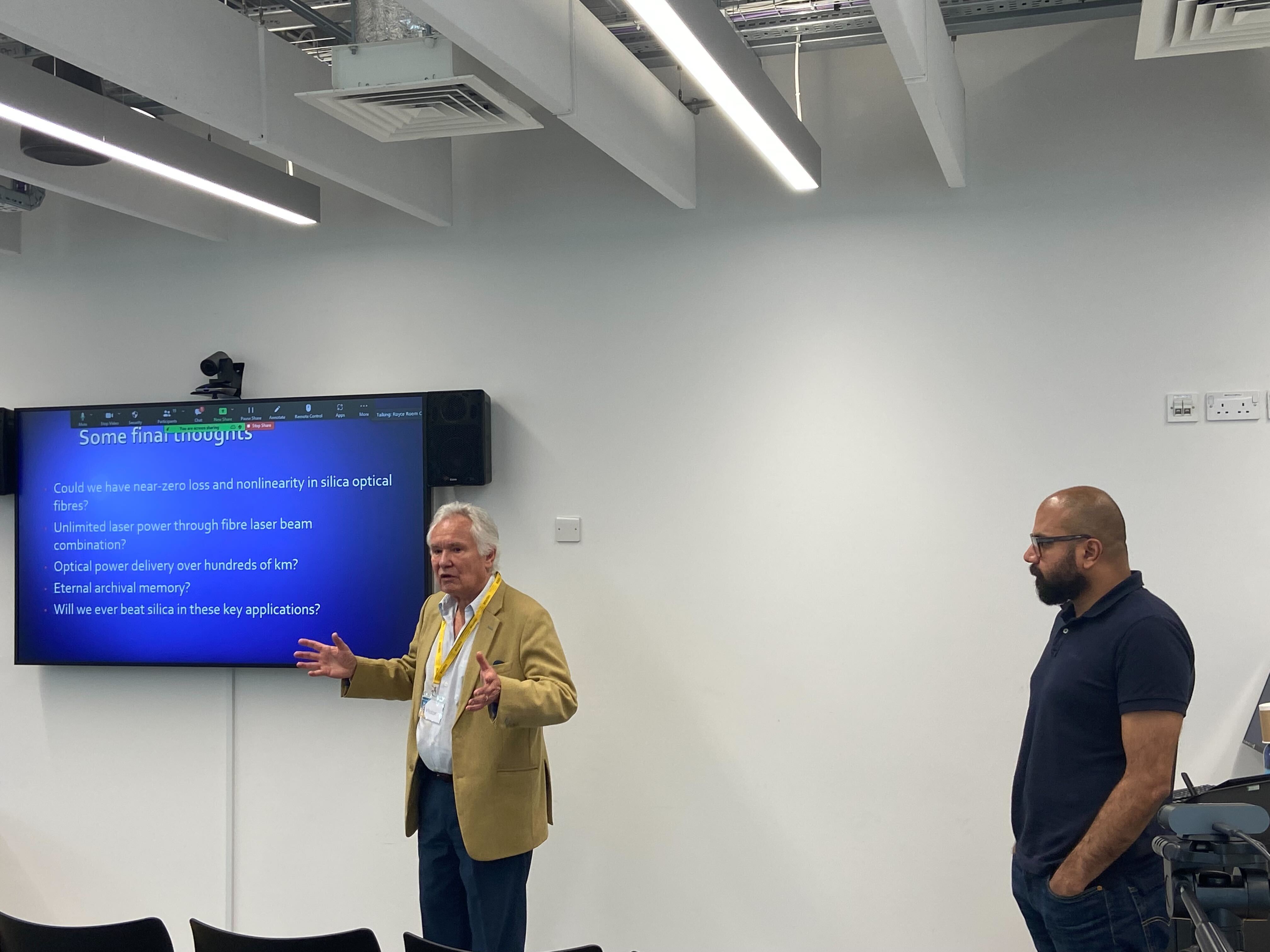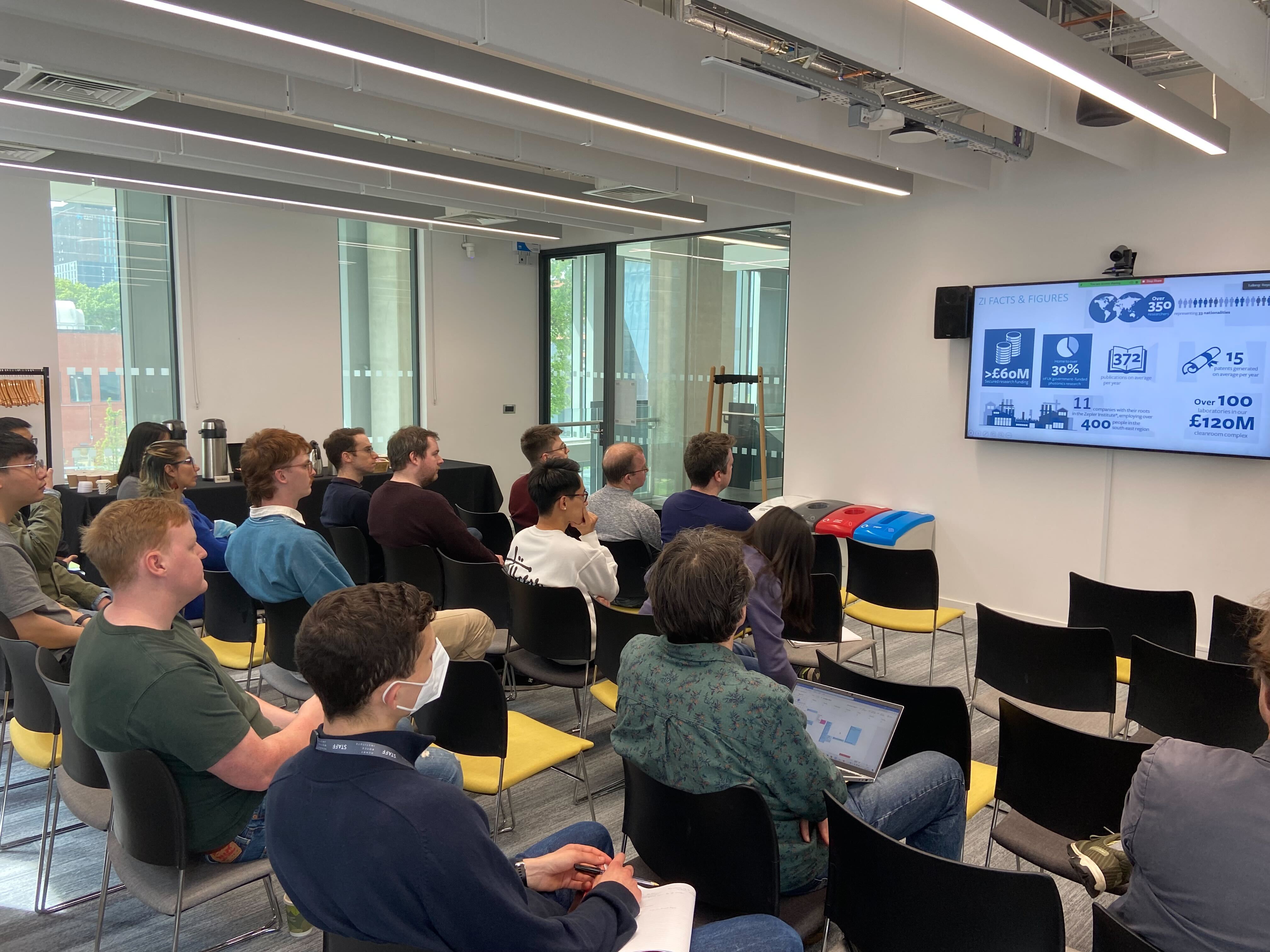



News, Views & Events
Events
Prof. Sir David Payne Visits LightForm in Manchester

Early in May, LightForm had the pleasure of hosting Professor Sir David Payne at the new Royce hub building in Manchester. Sir David is the director of the Future Photonics Hub at the University of Southampton. The hub is a partnership between two leading UK research institutes, the Optoelectronics Research Centre at the University of Southampton and the EPSRC National Epitaxy Facility at the University of Sheffield, working with a large network of companies, representing strategic UK sectors including telecommunications, healthcare, defence and aerospace.
Sir David’s visit formed part of the Materials in Manufacturing the Future seminar series being hosted by LightForm and the Henry Royce Institute in Manchester. During his seminar, Sir David discussed the research underway in core photonics platform technologies such as silica optical fibres, III-V semiconductors, silicon photonics, 2D materials and metamaterials, and how the hub is developing integrated manufacturing processes, making it simple and efficient to incorporate photonics into high-value systems.


The seminar was chaired by LightForm’s Dr Pratheek Shanthraj, and attended by staff and students from across the university and was also available to join online; there were many online guests from other institutions, as well as industry. You can see a recording of the seminar by clicking here.
Following the lecture, Sir David toured the facilities at Royce Hub and Photon Science Institute buildings including TANIST (a project to develop a custom-built system that allows thermal and mechanical testing with simultaneous microstructural observations at an unprecedented spatial and temporal resolution), P-NAME (facility provides the ability to create materials in which highly localised atomic doping), and our laser PFIB and EBSD facilities.
We greatly appreciated the opportunity to meet Sir David and learn from another leading figure in UK science and engineering.
